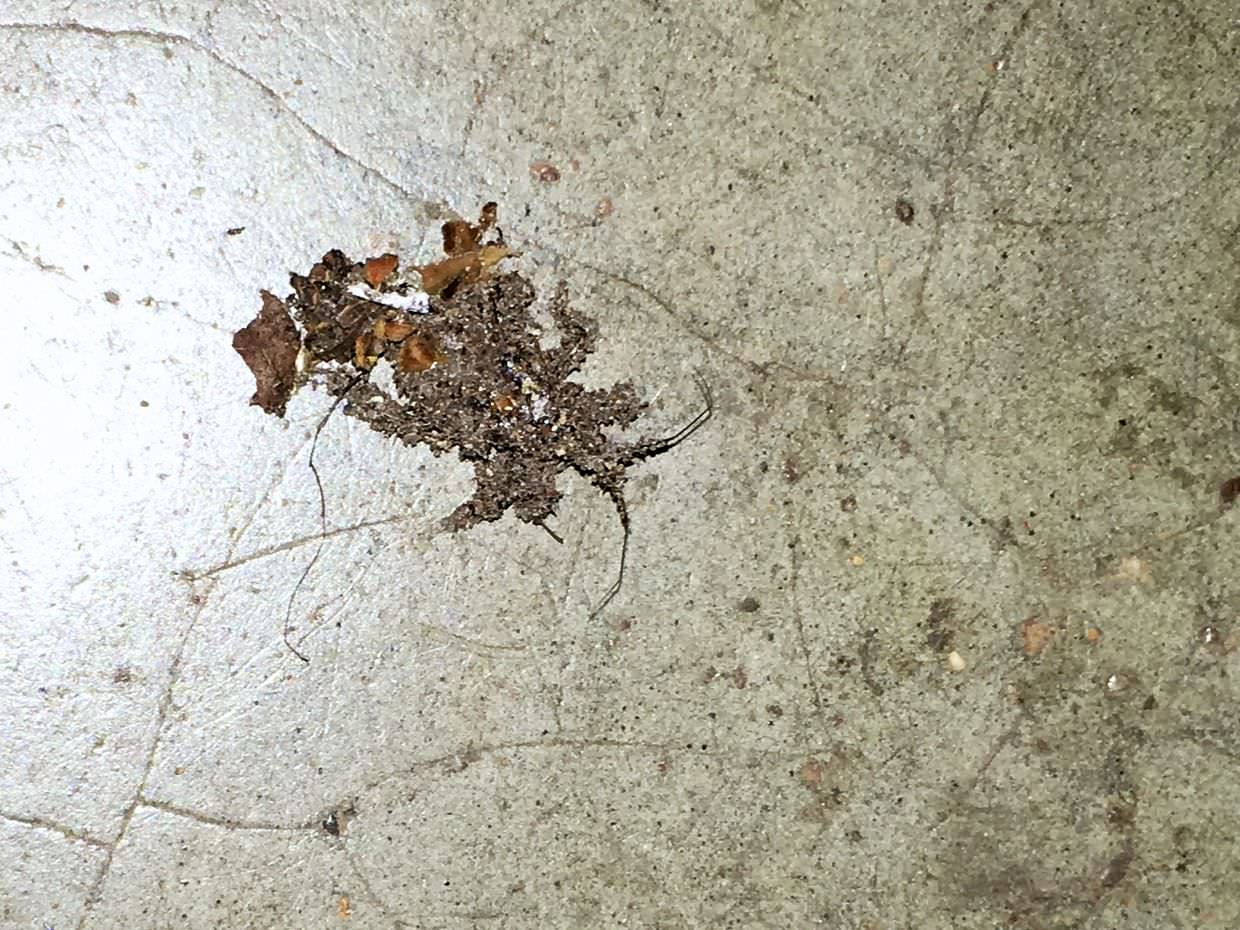Spending time at the boma
Day 2 - Our first trip to the boma
On an overcast morning the focus returns to dogs. The vets and Hayden go out early, one last attempt to find and dart Elsa – the whole pack would be in the boma. She’s elusive again, she hides and now the vets need to leave.
Bulls and peat bog
Our first session of the day was with Leo; our first stop is the hide. A different scene now – a mass gathering of male bulls around the water. They’re playing, drinking, bathing, spraying mud over themselves with a flick of their trunks. The nyala are still here, storks too, some duiker brave the trip to quench their thirst, and some aggressive little Egyptian geese fight anything that enters their territory.

We leave the bulls and continue on our tour of the park. A black-chested snake eagle flies across in front of us, then a purple-crested turaco nips by – its mohican clearly visible. In front a yellow-throated longclaw makes us wait.
Tembe has a peat bog; over thousands of years layers of mud have formed, “1mm per year” Leo tells us. It’s a protected and rare habitat, infuriatingly it’s on fire. It’s been on fire for over a year. The fire wasn’t intentional – something burning outside the park spread to the bog, and from there it’s never been put out. When it was small enough to douse, not enough was done. The smell of burning peat, a little like burnt clutch, fills this part of the park. At times the smokes gets so thick you can’t drive through it.
Animals still graze here; some of Tembe’s few grazers can be found near the bog – we see a pair of zebra, one ready to “drop” a foal; and a herd of buffalo.
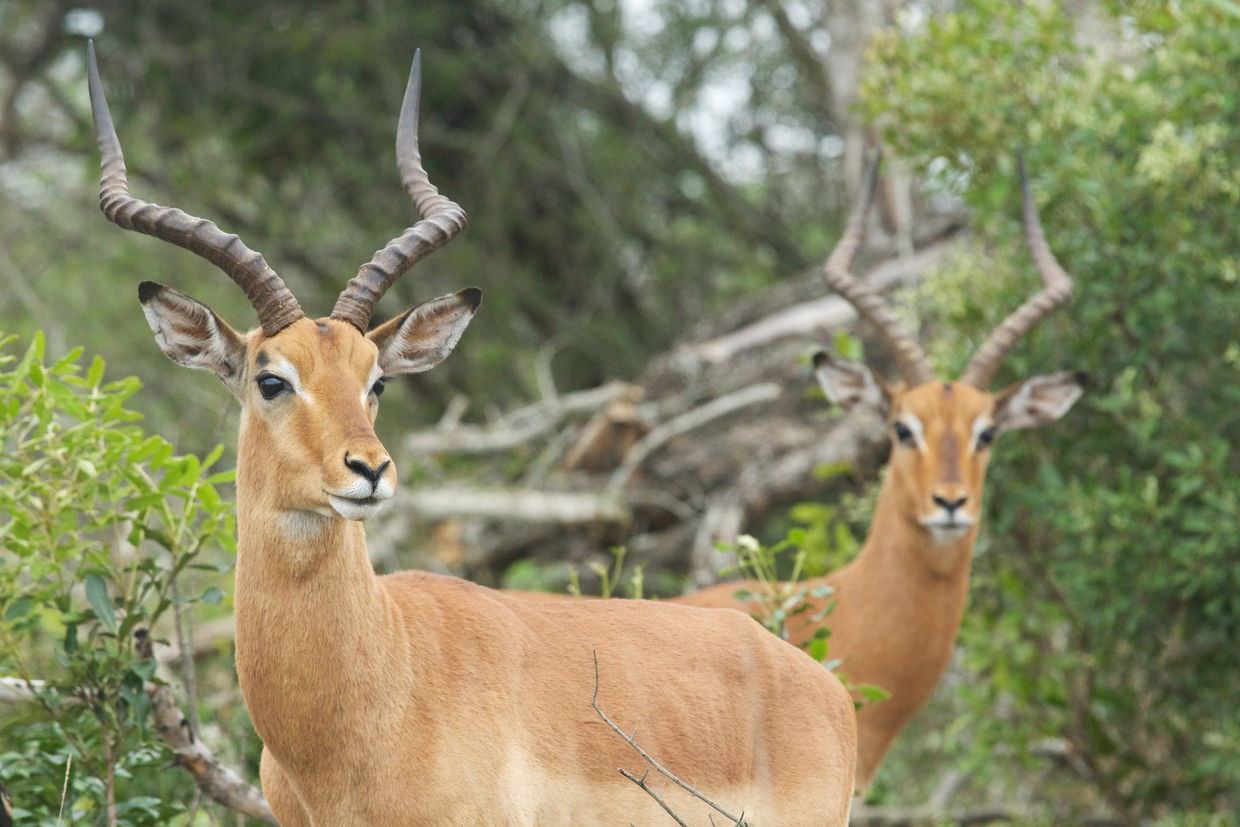
As we travel through the park we pass herds and herds of nyala. They’re everywhere and there’s too many. At least a sixth of the population must be culled. Elephants clear out the sand forest, keeping the forest sparse and letting plants grow anew – it’s an important process. However when they’ve left the nyala come in, and they finish the place off; chewing away all the undergrowth that the endangered suni need for cover.
That said, we never really tired of seeing nyala. They are gorgeous animals; the male and female so starkly different – one dark brown with horns, the other tawny, both with a pretty band of white across their nose, the females with white stripes on their backs – like icing dribbled over a cake.
Against the overcast skies the springtime yellow and green sand forest is picturesque. On the sandy roads we pass timid grey and red duiker, then slow when we find an elephant. It’s a breeding herd.
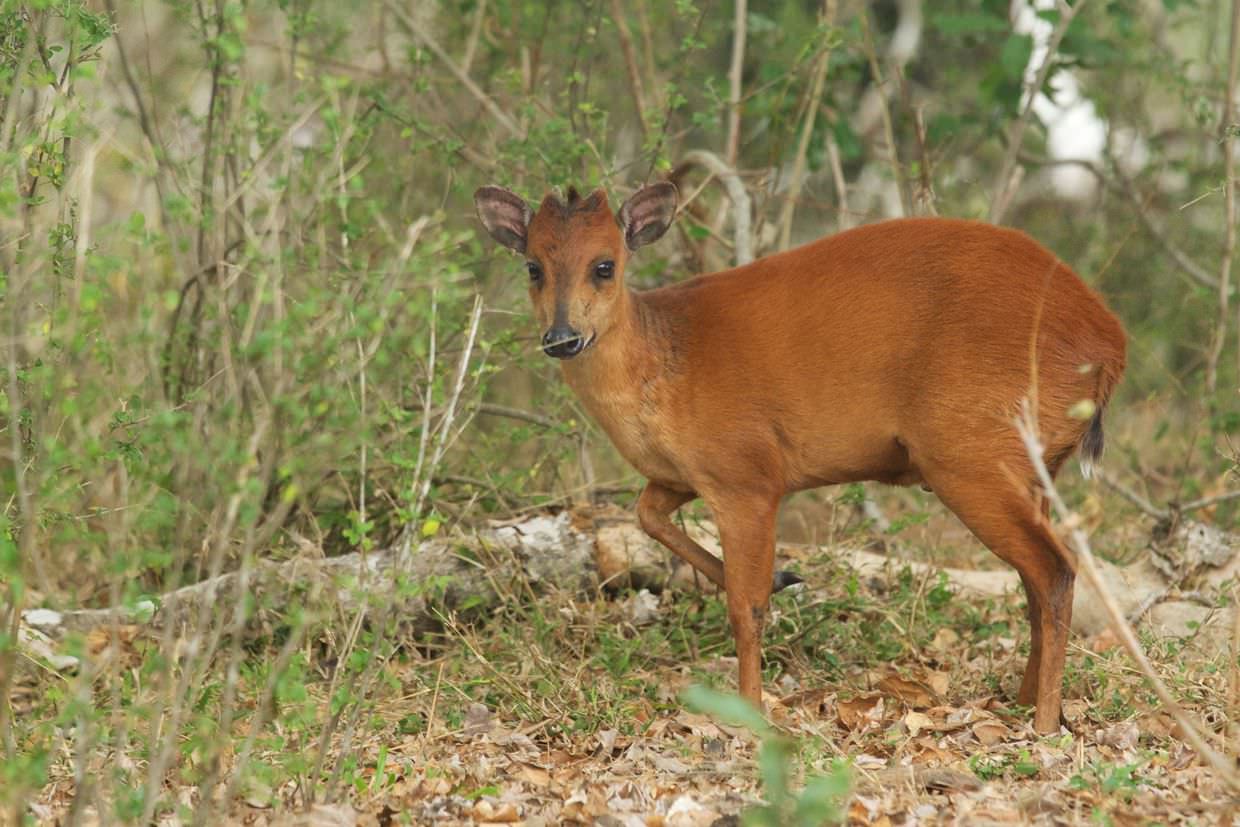
Being besides a breeding herd is more perilous than a single elephant. Without warning you can be boxed in, with elephants blocking all exits – in those situations you need to wait it out; then all it takes is one curious or angry elephant and you and the truck are done for. Of course the females are with young too, an extra reason for them to get upset.
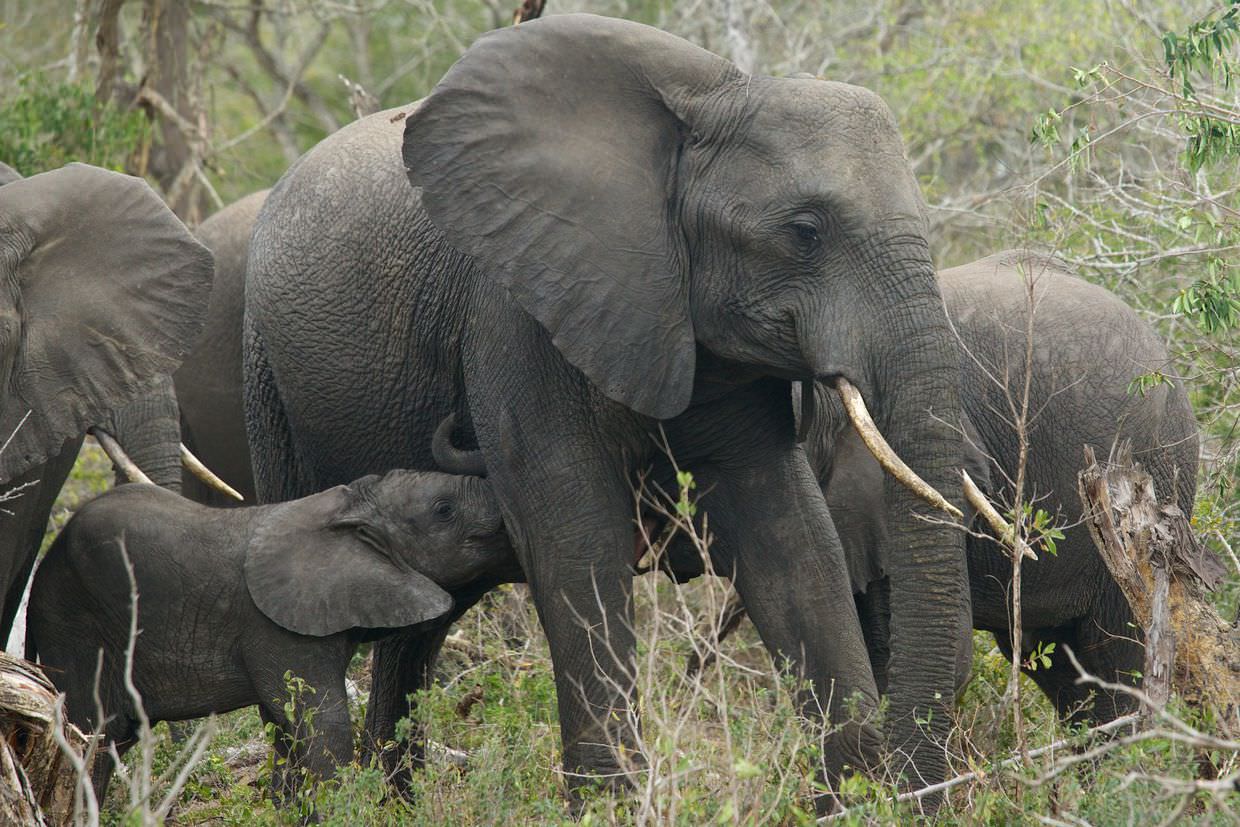
As the herd pass us, moving in front and behind, at times just a few metres away, we stay extra quiet. We mustn’t make ourselves big – no GoPro selfie sticks pointing out of the vehicle – it might be interpreted as a sign of aggression. Camera’s mustn’t beep, they don’t like the artificial sounds. We try not to move, and we duck down in the back, keeping ourselves small to avoid giving any wrong impression.
Over half an hour the herd passes us without incident, mothers and calves looking at us then continuing, an exhilarating if not frightening experience.
To the boma
At 4pm we had our first session with Hayden. Like iMfolozi, he showed us how to use the telemetry. We use the receiver, one that’s significantly better than iMfolozi’s, to find locations for collared lions; Kampa, Nyanga and our newly collared boy – M90. We find signals quickly, and that’s enough to confirm they’re all in the park.
At the site of the lion call up the dead nyala still rests. Chained to the metal fences it’s been nibbled at by the lions, they must have come back – a good sign that the experience hasn’t negatively influenced them. There’s still meat left, we leave it a while longer. Flies are everywhere.
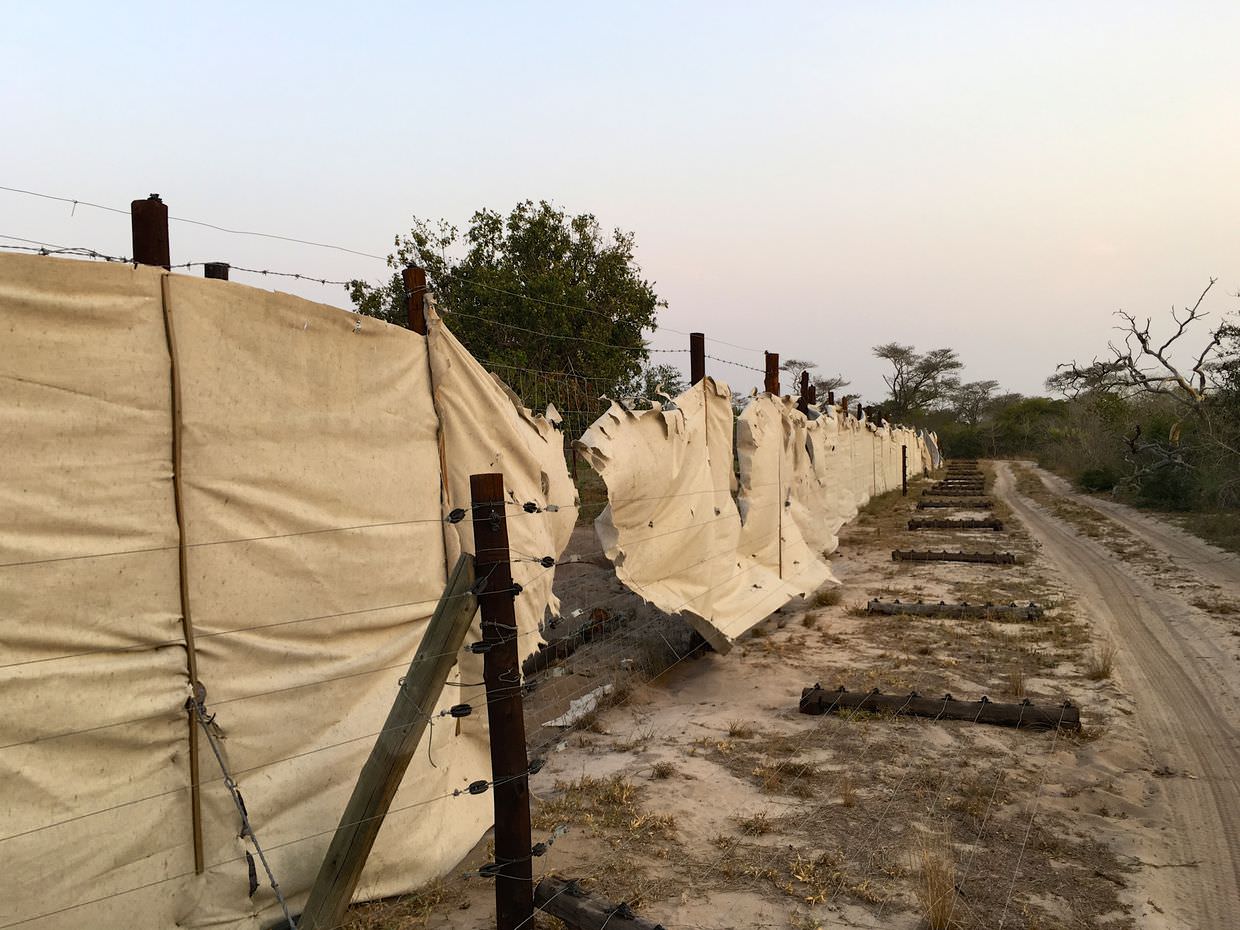
Now our first trip to the wild dog boma. The first of many. The boma is the size of a small football pitch, it’s divided into two and surrounded by a metal fence. Lining the inside and outside are electric fences – protecting what’s inside from elephants, preventing what’s inside from getting out. There are two gates to drive in, each with an airlock like system to stop anything escaping.
When we arrive all 5 adults are in their half of the boma, but the puppy has escaped to the other side. Being so small it can simply pass through the holes in the gate. It runs left and right, moving awkwardly, its back left leg damaged somehow. In the boma it should have time to rest, if only it would stay in one place.
We perform laps of the boma, driving round to check for holes and fence damage then return home; I cook us all a shepherd’s pie and we call it a night.
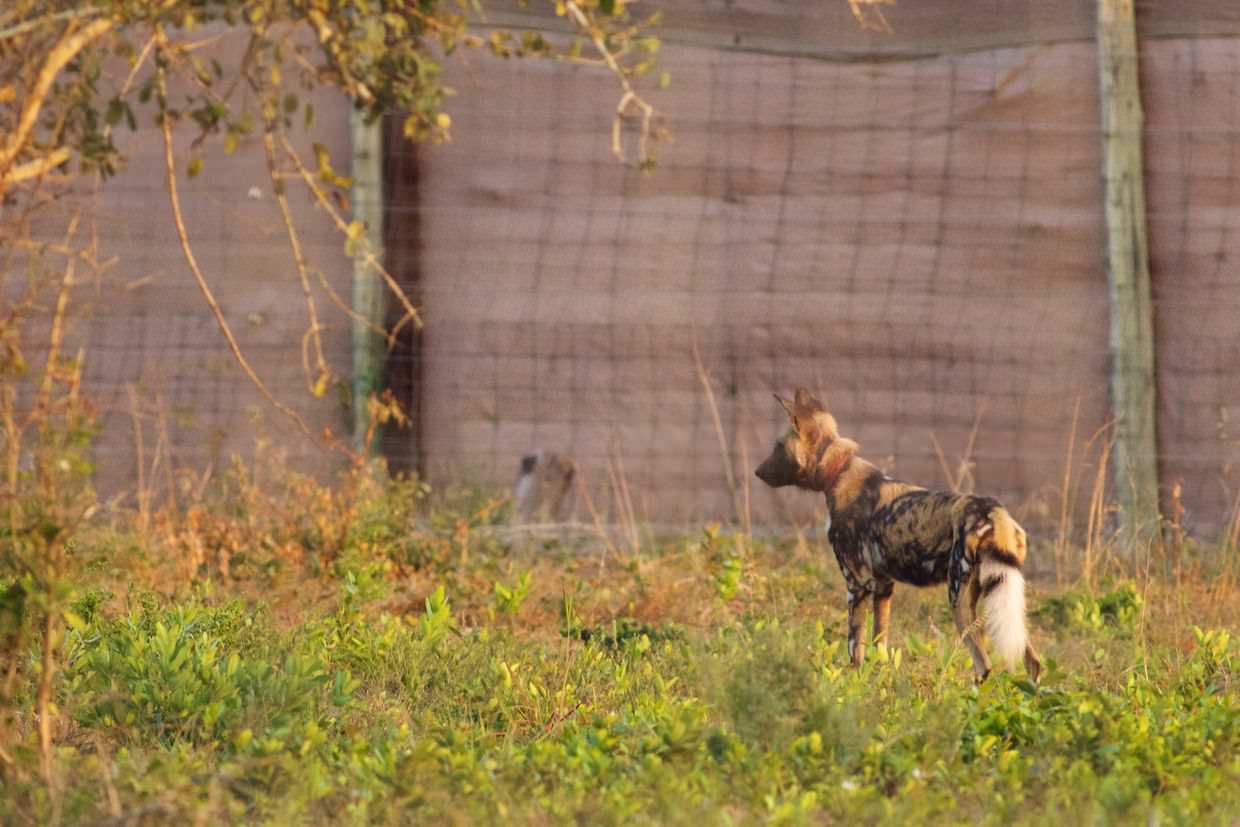
Day 3 - Boma, boma, boma
If Hayden looked worried when we couldn’t find the puppy last night, then today his look was one of despair; when we arrived at the boma to check on the dogs we found that the puppy had escaped. “You let your puppy leave!”, Hayden says angrily to Poofy, its mother and the pack’s alpha female.
When we scan for Elsa we get a strong signal; her weak collar tells us she’s nearby, and as we do our boma circuit we find more evidence – there’s a fresh nyala carcass; she’d made a kill right beside the boma, presumably using its electric fence to help. Yellow-billed kites circle above it. We can only hope that the puppy is in her care.
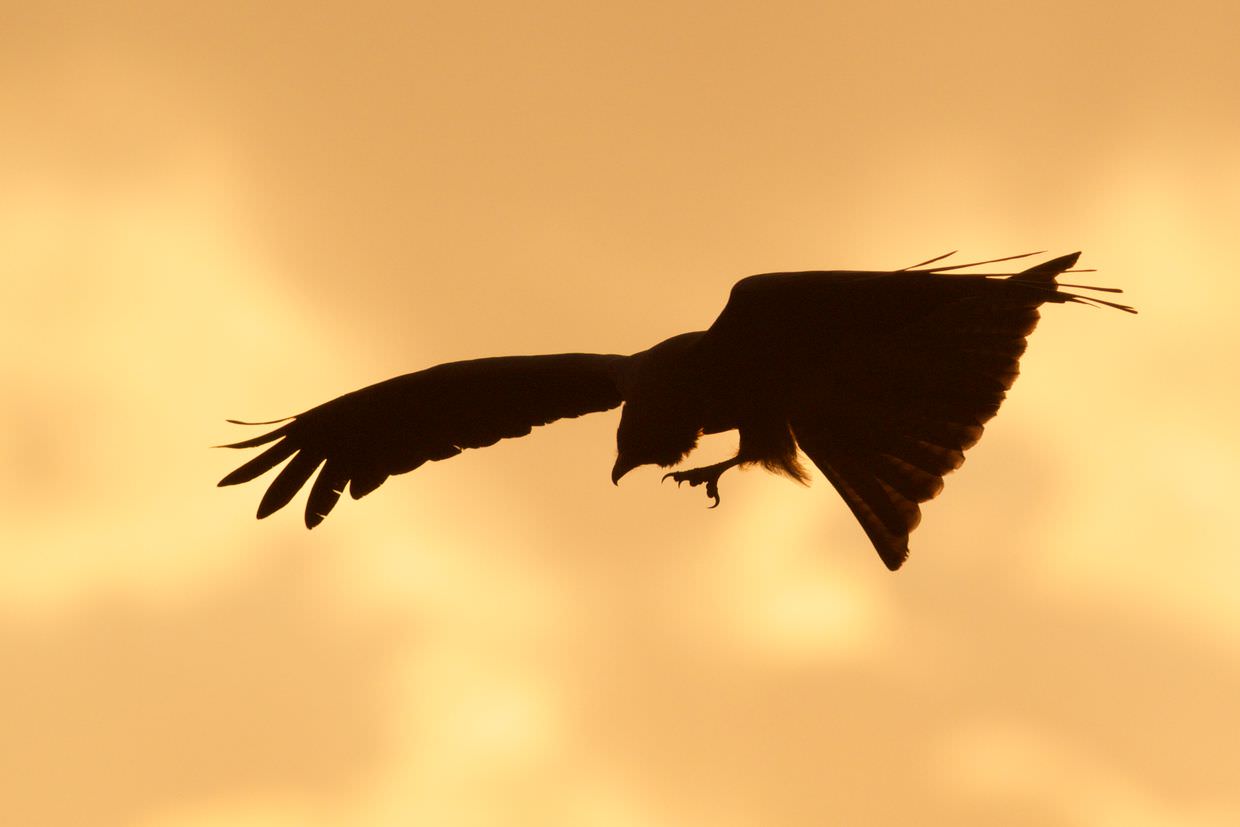
When Hayden is thinking he’s very quiet; he leaves the truck and does an internal check of the boma, walking around looking for holes, looking for tracks, looking for places the puppy might have escaped. Trying to piece together the events of the night. He finds tracks by the gate; the story becomes clear; the gate’s fence holes were too large and the puppy could slip through them. Overnight the electrics had gone down, giving the pup enough time to squeeze through two gates and hop two layers of electric fence.

Elsa had kindly left us a convenient fresh carcass – a female nyala she’d killed besides the boma – she’d had her fill so we loaded it on to the truck to use as bait for the rest of the pack. We wait in the back of the bucky as Hayden plays Sherlock, a carcass, and a leg of nyala from the mortuary sitting with us.
Now the yellow-billed kites are circling us. Have you ever seen Hitchcock’s “The Birds”? They perform a beautiful aerial show; swooping, squabbling and fighting with each other in the air, like a dog fight. Each of them has its eye on our fresh meat, we were confident they wouldn’t touch it with us sitting so close. We were wrong; one kite flies low, passes the front of the truck, then swoops down, brushing my shoulder and grabbing a talon-full of meat; in one sweeping motion it comes down, grabs the food, and rises again, never landing. I’ve had seagulls steal my tuna sandwich before, but this was a wild bird of prey. Astonishing.
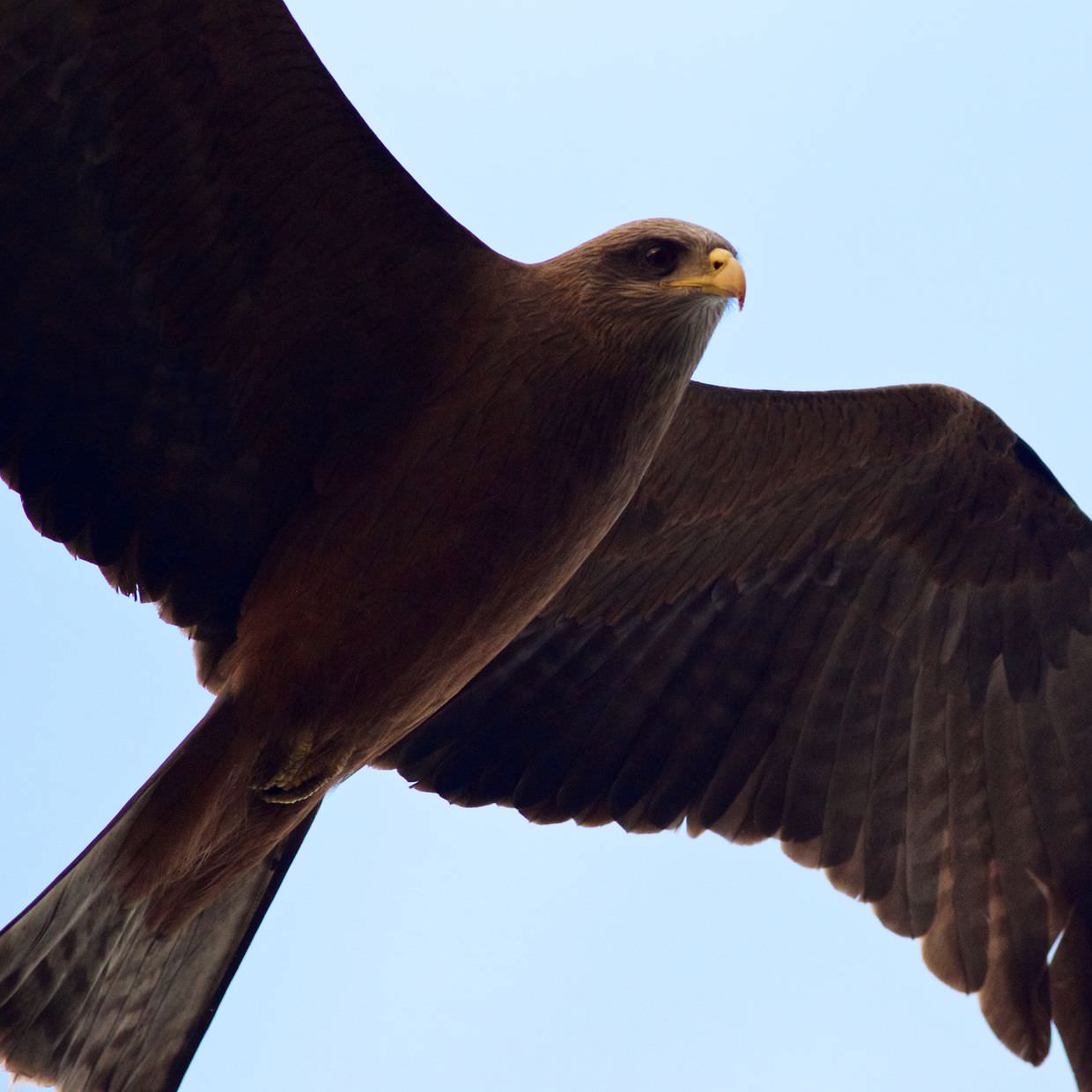
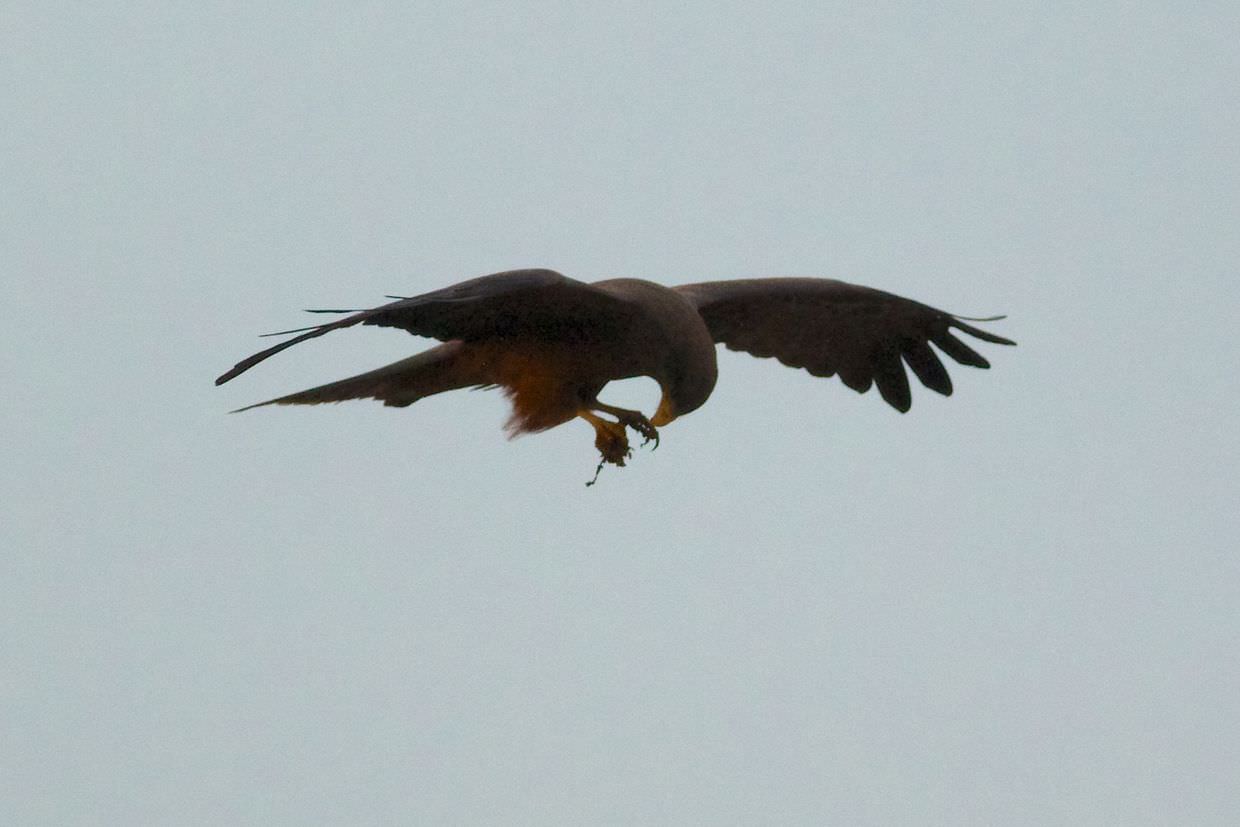
Even though the pack are in the boma, we continue with the habitualisation – on moving day it will make things easier; Hayden chains the nyala carcass to a tree and we drive away; all 5 dogs rush in and feed frantically. With the truck we try and get close, edging ever closer, getting the dogs comfortable with our presence.
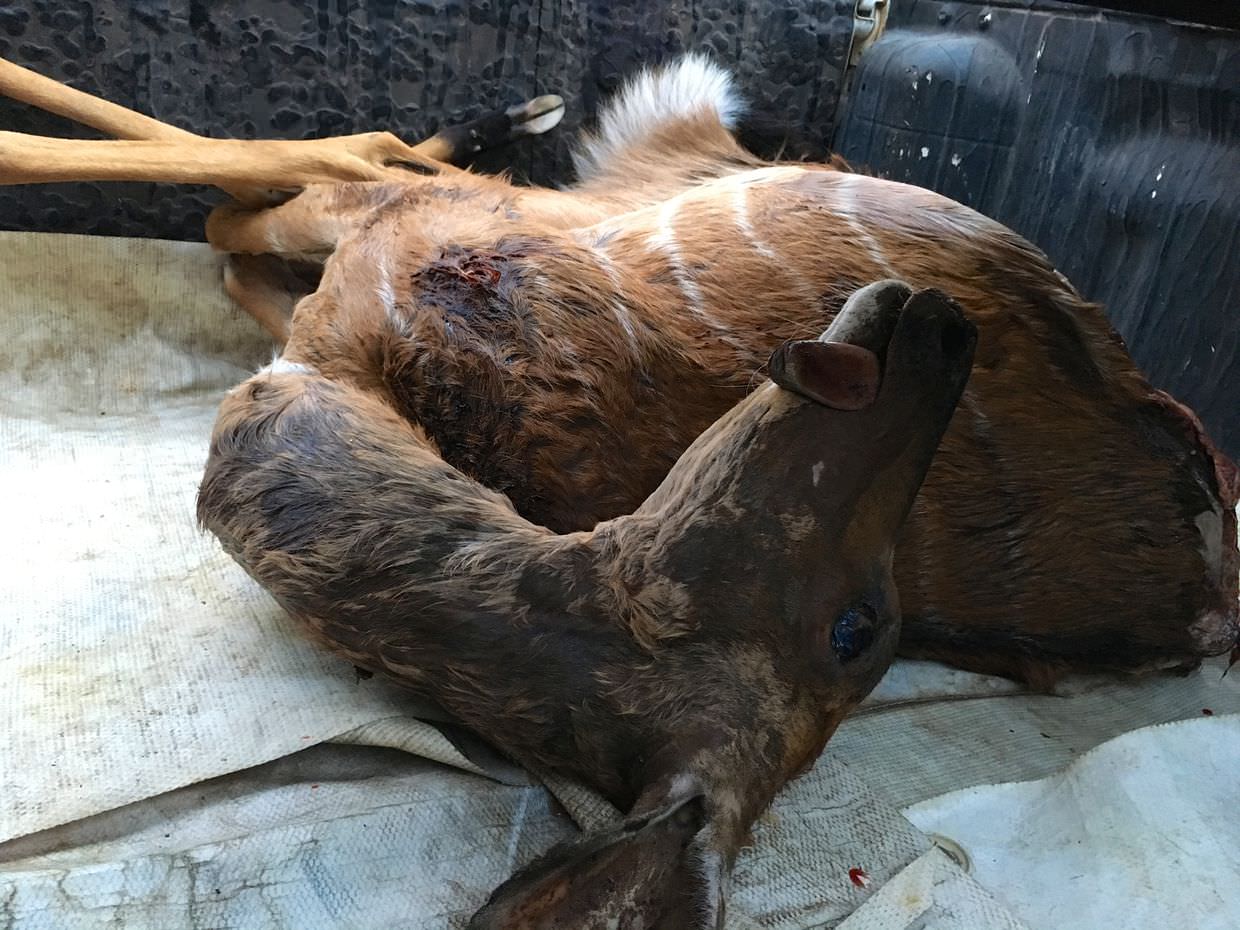
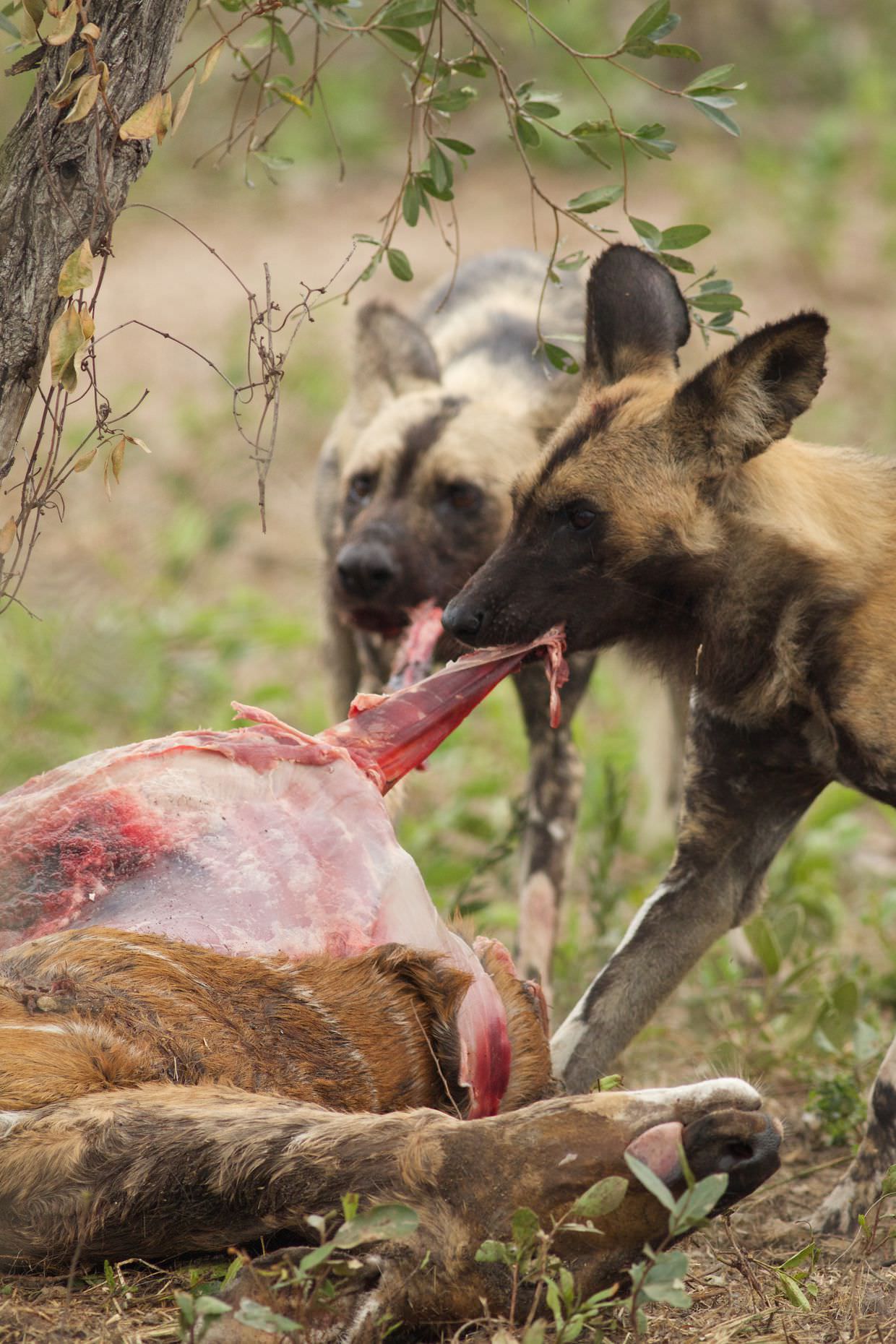
Hayden’s patrol revealed signs of fresh digging, presumably the adults wanted to join the puppy on the other side and had renewed incentive to dig beneath the fence. We grabbed some heavy logs from the road side and filled all the dog’s trenches. No doubt they’ll try again.
On wednesdays it’s shopping day in Tembe; we returned to camp early. Our evening session was similar; we scanned for lions quickly, then returned to the boma; checking electrics, checking for holes, watching for Elsa.

Unexpected visitors
Back at camp Joris oven cooked some chicken; he makes the best chicken. There was a knock at the door. Outside, a man asking for Hayden. Hayden was at the boma – it was his night shift. His name was Theo, he was carrying a six-foot rock python. The snake was injured, he’d found it on the road and was attempting to save it – there were some faint signs of life but it soon died, its injuries too severe; it had been run over, they left it in the truck. Theo, partner and son were staying over; Theo it turns out runs all the gun training exercises and tomorrow Leo had a session with him.
Next morning the truck was still outside the kitchen, the snake however wasn’t. It had survived, and was now slithering around camp somewhere, we followed its tracks in the sand for as far as we could.
Day 4 - Lion cubs at sunrise
Today was a scorcher, with temperatures climbing into the thirties. As per usual, our morning session began with a trip to the boma; just a couple of laps looking for holes and tracks, then we left in search of lions. The dogs have priority, but Tembe has a lot of lions, and they need monitoring too. Many of the prides are collared, but lots of them are up north, out of reach.
From the boma we headed East, out toward the smokey peat bog. We didn’t get far, amidst the still smoke, an elephant in the road. He stopped feeding and began to walk our way; we backed up, as you should, giving it more room. It kept heading towards us, not fast, not angrily, just pacing gradually in our direction, using the road as a path. Hayden reverses some more, and the elephant turns off, taking a well-trodden game path into the bush. My adrenaline was ready to kick in. We resume our search for lions.

The road from the bog turns North, and we followed it up towards Ponweni hide, using telemetry to gauge our distance from the lions. In the sandy road, fresh tracks; “lion!”, a lioness was in front, sitting on the roadside. With her, two nervous four month old cubs. The sun was just rising, and its early light cut through the forest, illuminating them beautifully. This female often travels with her sister, and it wasn’t longer before we found her too, and with her – more cubs. This was the first confirmed visual of these cubs; we counted 4, about 2 months old. Through the silvery tree branches they watched us. We stayed with the lions for half an hour, until they vanished in the foliage. We had coffee and rusks at Ponweni hide then returned to camp.
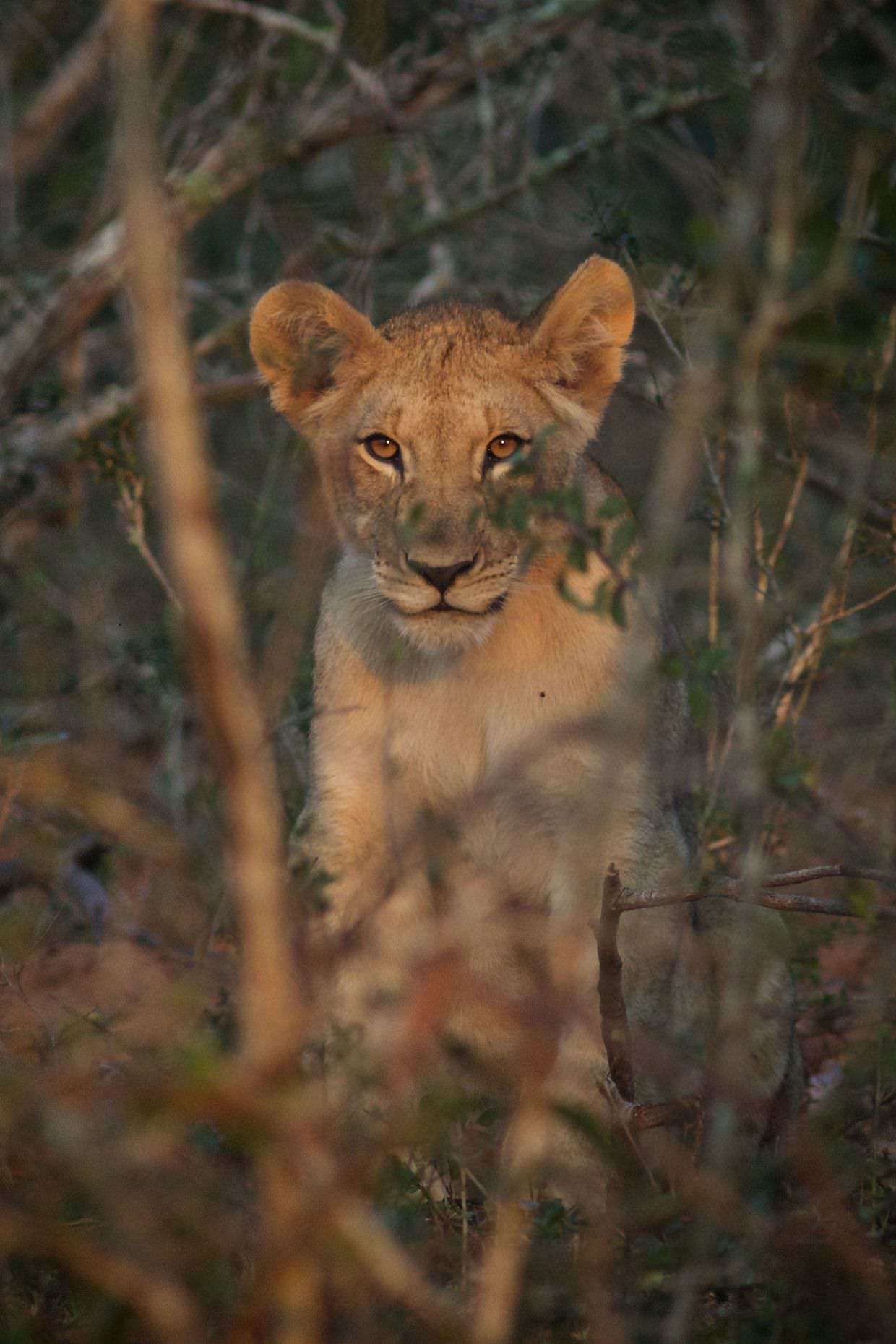

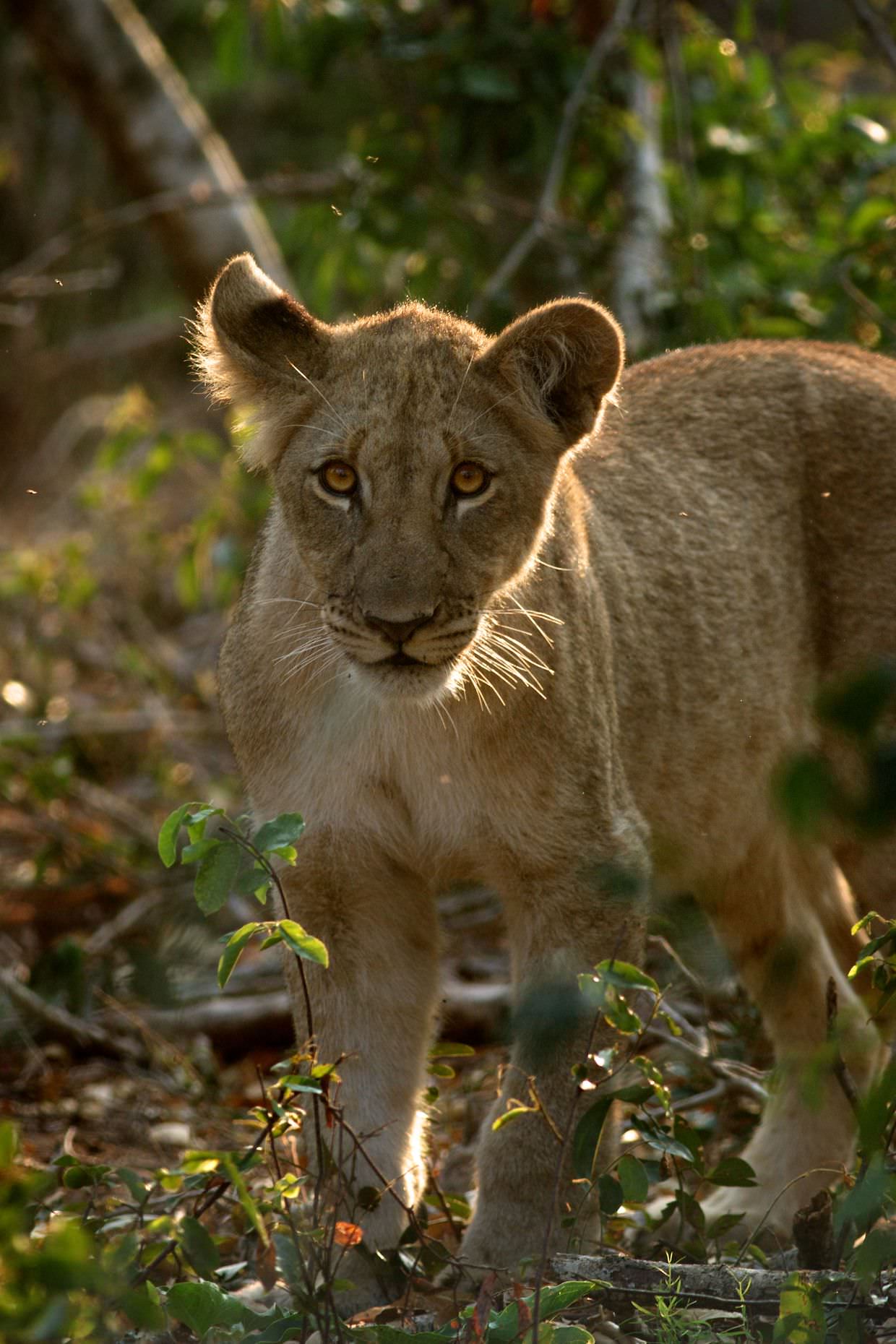

Busy waterholes
It wasn’t long before we were out on the road again. Leo’s elephant session began at 10:30am, just enough time for peanut butter on toast and scrambled eggs. A staple Tembe diet. These midday sessions, about 4 hours long, can be tough in the heat; with little shade and the sun bearing down, we needed plenty of water. So too do the elephants, and that makes the waterholes the place to be.
We return to Ponweni, passing swallows at the peat bog, a lone zebra pair and a southern banded snake eagle. Here, a few elephants rolling in the mud, a small breeding herd cooling themselves down with the thick black stuff, their trunks picking up gallons of it and spraying it all over themselves. It looked pleasant. Around the hide sunbirds danced amongst the boer-bean. The family soon left, their backsides coated in mud. The hide now empty, we left for our next stop.
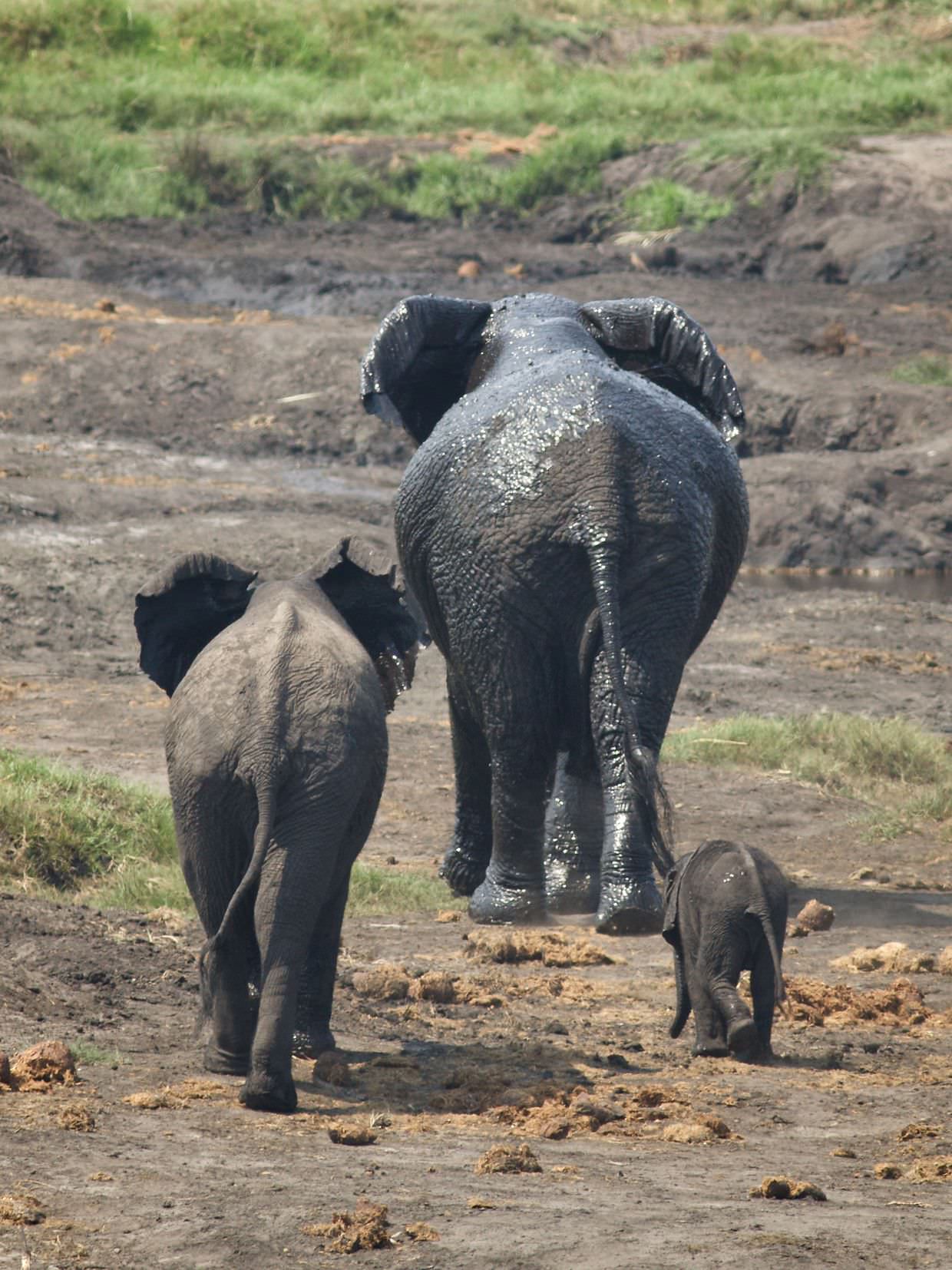

As expected, the nearby waterhole was a flurry of activity. Hamerkops and herons were fishing in the water, and a breeding herd were drinking. Crested guineafowl marched about the place. Great herds of nyala and impala were by the water’s edge. This was the Africa I’d seen on TV; a waterhole overflowing with wildlife. Baby elephants sloshed in the water, in the shade of their elders, adults had minor scuffles, kicking up dust and knocking tusks. A kite found a gap for itself, a safe place to drink from.

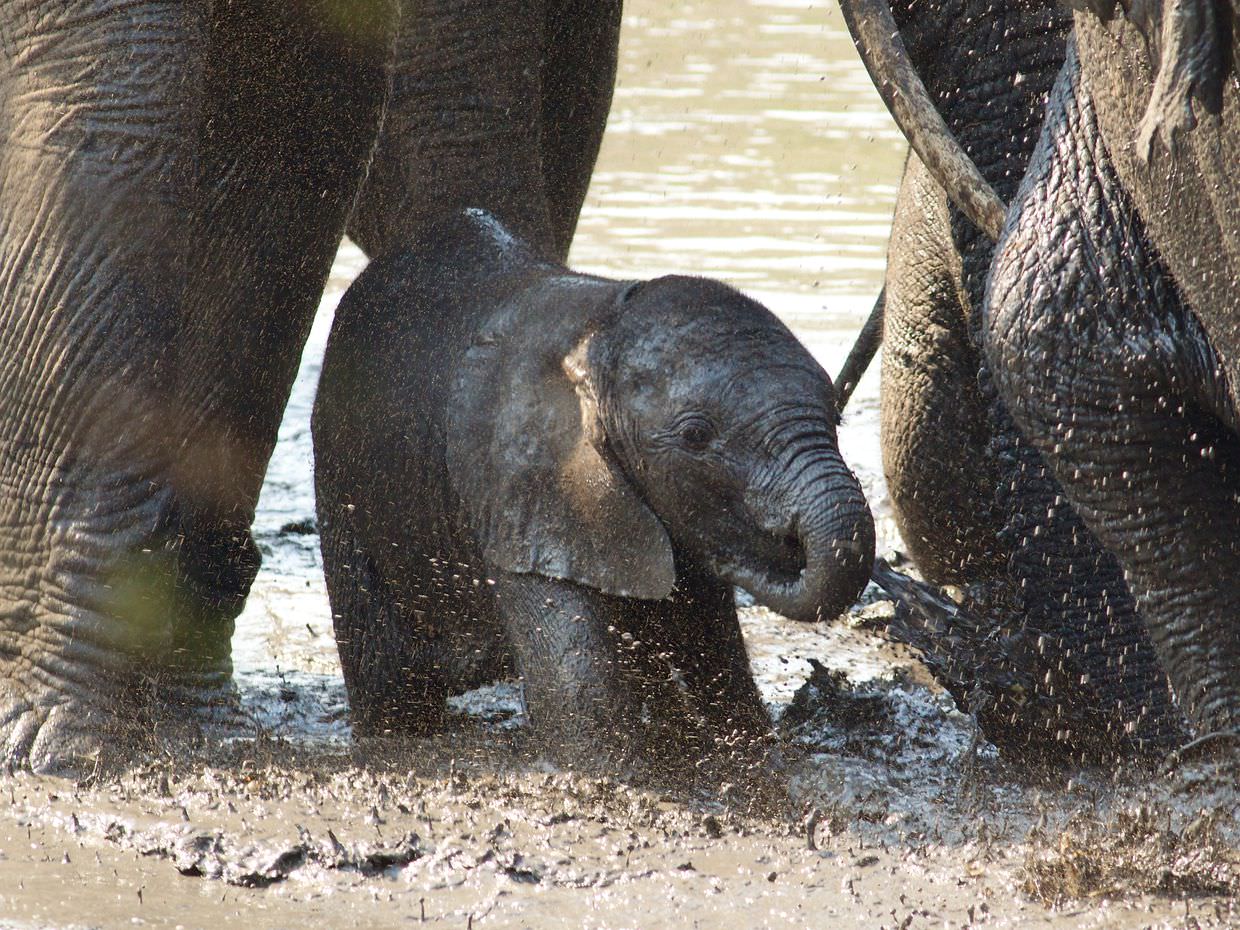

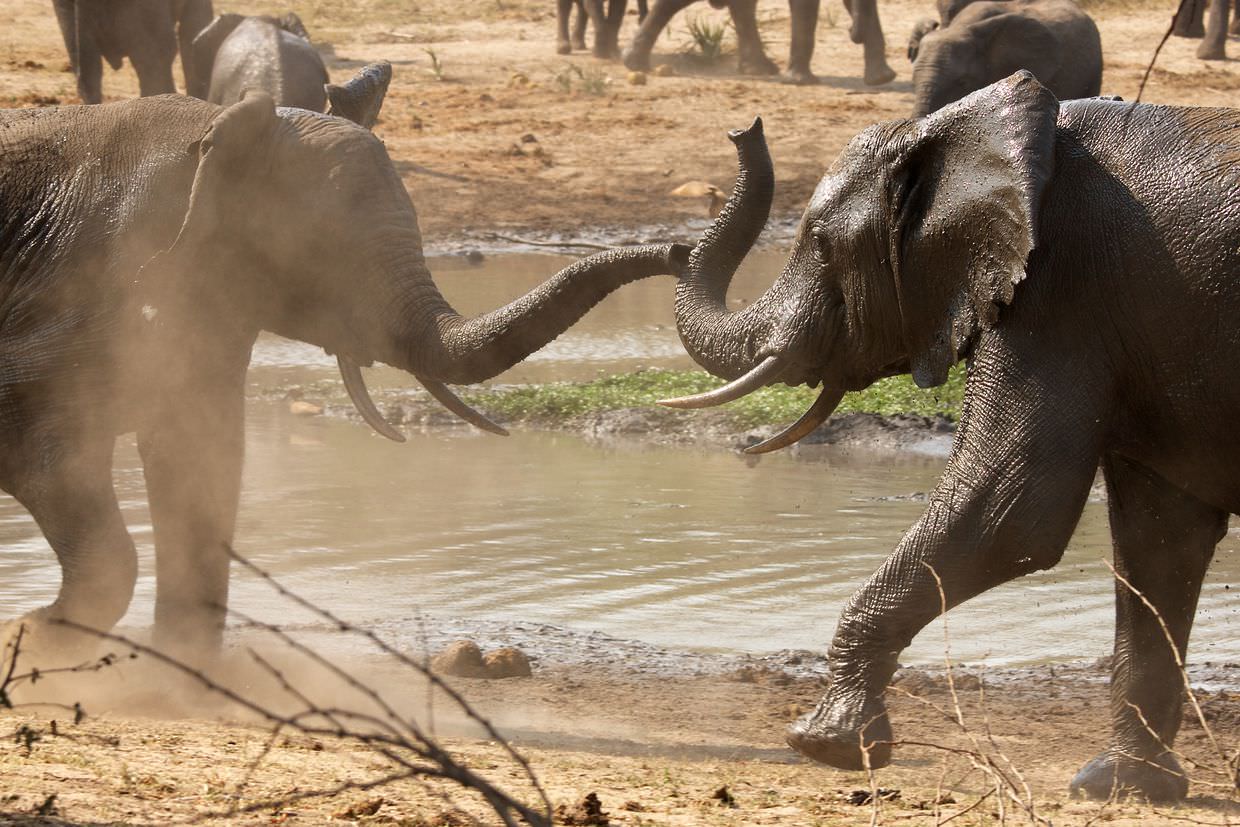
From the back of the waterhole, a great elephant appeared. Elephants are big, and I thought I’d seen big elephants. This male was a monster. Twice the size of a small female, he was a tusker. A tusker is an elephant whose tusks weight more than 100lbs, or 45kg. He was the third largest in Tembe, and the biggest I saw on my whole trip. Leo positioned the truck so he’d walk right by us, a beautiful and powerful creature.

Black label lager was the perfect antidote to the heat, which we drunk while observing a little orange-bodied spider we couldn’t ID.

Working at the boma
Our long hot day was topped off with a session of physical labour at the boma. With shovels, rocks, bricks and wood we returned to fill in all the holes the dogs had dug; fill them proper – plugging the big gaps with hard to move objects and throwing sand on top. We worked clockwise around the boma, 6 of us shovelling and digging, the truck shielding us from view of the dogs. We paid careful attention not to touch the electrics ourselves, a single jolt would be extremely painful.
Cleaning out the water trough was the dirtiest job, these dogs are filthy, meaning they don’t mind pissing and shitting into their water supply. We were literally shovelling shit, but it needed to be done. The smell was unimaginable.
While waiting for the night guard to take over boma-watch, we got a sighting of Elsa; she was running outside the far end of the enclosure. What’s more, the puppy was with her; it was alive and being looked after, though still hobbling.
At camp we cooked spaghetti bolognese, while peculiar looking assassin bug nymphs walked on our kitchen table.
